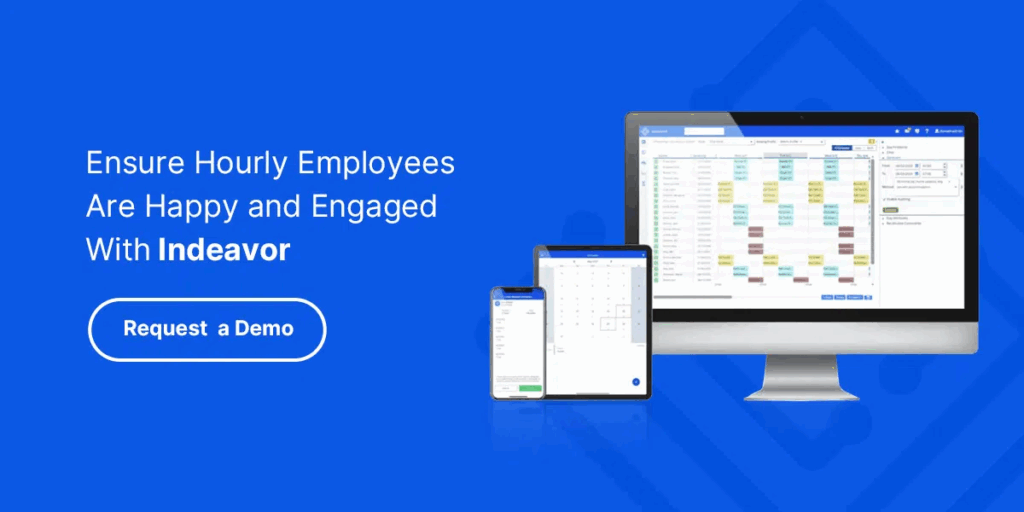Employee engagement and retention have become strategic imperatives for organizations across industries. With increasing labor shortages, rising turnover costs, and evolving workforce expectations, organizations can no longer afford to treat engagement and retention as separate initiatives. Companies must approach employee engagement and retention with a long-term strategy that aligns with workforce expectations and operational goals.
What is employee engagement and retention? Why does it matter? And what are proven strategies organizations can implement to build a loyal, productive workforce? While many companies know engagement and retention are important, few have the tools or systems in place to address them holistically.
The Connection Between Engagement and Retention
Before diving into action plans, let’s clarify the employee engagement and retention meaning. Engagement refers to how emotionally committed an employee is to their work and the organization. Retention is the company’s ability to keep that employee over time, particularly as workforce expectations evolve. Companies must understand what motivates and retains their workforce at every level.
The relationship between employee engagement and retention is simple: the more engaged a person feels, the more likely they are to stay. An engaged employee shows up consistently, puts in discretionary effort, and contributes to a positive workplace culture. A disengaged employee, however, may disconnect quietly long before they leave formally, leading to costly losses in productivity and morale.
Research from Gallup consistently finds that engaged employees are 59% less likely to seek a new job within the next year. Turnover often spikes when people feel undervalued or disconnected from their work environment. Recognizing this connection is critical for businesses looking to build sustainable talent strategies.
Barriers That Undermine Engagement and Retention
Many organizations unknowingly create environments that work against employee engagement and retention. The following obstacles, if left unaddressed, can erode trust and drive employee turnover, particularly in shift-based workforces. Identifying and removing these barriers is the first step to building a culture of loyalty and high performance.
- Inflexible Scheduling: Employees with little control over when or how they work are more likely to feel undervalued. Rigid schedules can also lead to higher absenteeism, burnout, and resentment toward management.
- Poor Communication: Miscommunication or silence from leadership creates confusion, especially in fast-paced or shift-based environments. Without regular check-ins and feedback loops, disengagement spreads quickly.
- Lack of Recognition: Recognition isn’t just a nice-to-have. Feeling unseen or unappreciated is a key reason employees disengage and eventually leave. Workers want their efforts to be noticed and celebrated in real time, not just during annual reviews.
- No Clear Path for Growth: Employees without a development path often feel stagnant. Lack of visibility into advancement opportunities leads to job-hopping. Without growth, even engaged employees may start looking for new opportunities elsewhere.
- Inconsistent Policy Enforcement: When workforce policies are applied unevenly, employees can feel frustrated and mistrustful. This inconsistency erodes morale over time and creates perceptions of favoritism.
These challenges aren’t always visible on the surface, but they have a profound impact on the employee experience. When workers feel ignored, overworked, or misaligned with company values, disengagement quickly follows. Addressing these root causes is the first step toward improving both morale and long-term retention.

How to Improve Employee Engagement and Retention
These five strategies for employee engagement and retention are designed to reduce friction, improve satisfaction, and help your employees feel heard, supported, and empowered. Implementing them can significantly increase retention rates while creating a more resilient and motivated workforce.
1. Improve Scheduling Transparency and Control
One of the fastest ways to elevate employee engagement and retention is by giving workers more control over their schedules. A rigid, top-down scheduling process can leave employees feeling powerless and burnt out. Lack of predictability leads to stress, missed obligations, and decreased loyalty.
Organizations should implement self-service employee scheduling tools that enable shift swapping, automated time-off bidding, and visibility into upcoming shifts. This builds a culture of transparency and fairness. Employees who can manage their work-life balance are more likely to stay and perform.
Companies that automate their scheduling process and enforce rules consistently see improved attendance and better shift coverage. Indeavor’s intelligent scheduling solution, for example, enables real-time access to shift data, increasing both trust and accountability. It’s a direct way to improve both employee experience and operational reliability.
2. Prioritize Consistent Communication
Clear communication is foundational to employee retention and employee engagement. But for many hourly or frontline workers, communication is sporadic and one-directional. Frontline employees are often the last to receive updates and are rarely given a channel to share feedback.
Establish multiple channels for communication, whether it’s a mobile app, SMS alerts, or in-person check-ins. Managers should proactively reach out, listen, and follow up on concerns. When employees feel heard, they’re more likely to stay invested in the organization’s mission and goals.
Transparent communication also builds a culture of trust. Employees appreciate knowing how their work ties to business goals and being kept in the loop on changes. The result is a workforce that’s aligned, empowered, and loyal.
3. Recognize and Reward Performance
Recognition doesn’t need to be expensive or formal to be effective. Frequent public recognition can improve productivity, motivation, and loyalty across all levels of an organization. Recognition reinforces purpose and shows employees that their efforts matter.
Use dashboards to highlight top performers or implement peer-to-peer shoutouts. Tie recognition to business outcomes, such as reduced absenteeism or customer satisfaction, to reinforce impact and align with organizational goals. Making recognition part of your culture, not just a periodic event, can significantly boost employee engagement and retention.
Celebrating small wins fosters camaraderie and motivates continued effort. When employees are consistently recognized for their contributions, they’re more likely to remain loyal to the organization and contribute at a higher level.
4. Offer Development Opportunities
A lack of growth opportunities is one of the top reasons employees leave. Workers want to know their role is more than a dead end, they want a future. Providing opportunities for development shows that you’re invested in their long-term success. This doesn’t always mean promotions. Development can include mentorship, cross-training, and certifications that build new skills.
Workforce management systems that track skills and credentials can help leaders identify talent gaps and recommend development paths. Creating a clearer career ladder gives employees a reason to stay and strive for more. It’s a foundational element of effective employee engagement and retention strategies.
5. Apply Transparent Policies
When it comes to scheduling, vacation approvals, or overtime limits, transparency is key. Employees want to know the rules and trust that they’re being applied fairly. Consistent policy enforcement builds trust and reduces resentment among teams.
Digitizing your workforce policies ensures consistency across every shift, location, and department. Indeavor’s platform, for instance, allows employers to build complex policy rules right into the system, eliminating favoritism and confusion. When systems are automated, they are also auditable and scalable.
This helps create a culture of fairness, a key driver of employee engagement and retention. It also reduces administrative overhead and improves compliance outcomes, providing benefits for both HR leaders and frontline managers.

The Power of Workforce Technology
Organizations that rely on spreadsheets, paper forms, or outdated tools are at a disadvantage. Manual processes create friction, errors, and delays that directly affect how valued employees feel. These outdated methods often result in scheduling conflicts, unapproved overtime, and poor visibility into labor coverage.
Digitizing your workforce operations allows for smoother processes, better compliance, and improved employee experience. It also signals to employees that their time and contributions are worth investing in. The right tools can be the difference between daily frustration and workplace satisfaction, directly influencing both employee engagement and retention.
If you want to strengthen your workforce, start by evaluating how your current processes support, but it also you also your team. The right tools and strategies can make the difference between a revolving door and a thriving culture. Investing in employee engagement and retention not only protects your labor investment sustainable growth.
Why Indeavor?
Indeavor offers a purpose-built workforce management solution for shift-based environments where staffing, compliance, and satisfaction work in harmony. The platform addresses core issues affecting employee engagement and retention, including scheduling transparency, real-time communication, and skills development. Through automation and workforce intelligence, we help organizations align labor strategy with engagement goals.
Implementing a system that prioritizes employee engagement and retention can reduce turnover, improve productivity, and create a work environment where people want to stay and grow. Improving employee engagement and retention isn’t a one-time initiative. It’s an ongoing commitment to aligning people, processes, and purpose.
Ready to see how Indeavor can help? Request a personalized demo today to learn more about our platform.
About the Author
Claire Pieper is the Digital Marketing Specialist for Indeavor. In her role, she specializes in crafting strategic and engaging content, ensuring that customers are well-informed. Claire is dedicated to enhancing the customer experience and optimizing the user journey through Indeavor’s solutions. To learn more or get in touch, connect with Claire on LinkedIn.



